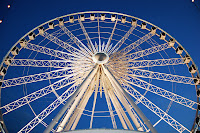A photographer I have been a huge fan of for quite some time now is Terry Richardson. I have a huge passion for fashion which is why I love his work. He has done a bunch of work for a well known brand named Supreme. That is where I was first introduced to his work. His style of photography is more so portrait shots. But these portraits are not ordinary portraits one would see done by a regular photographer. His portraits showcase the subject in candid moments. A lot of his work is also unaltered which is one key aspect I like. Here are several pieces done by him that are my top favourite.
This photograph was taken for Supreme's Kermit the frog collaboration. Richardson's technique of shooting photographs is as follows. He usually allows the subjects to act normal and do whatever they please and he takes the photographs. This allows a more realistic/unique photograph. The images are unedited since they are very simple.
Here is another photograph Richardson took for Lil Wayne's photoshoot. Lil Wayne was able to do whatever he wanted during the photoshoot. During the shoot he would drink, smoke and fool around while Richardson took the photographs.
This image was taken while Kanye West was still dating Amber Rose. Terry allowed them to strike any pose they pleased to. He allowed Kanye to incorporate his artistic view into the shoot by allowing him to provide any input.
Another image by Terry is this one featuring Pauly D from Jersey Shore. Terry allowed Pauly D to portray his Jersey Shore character within this photo. He is depicted as the "guido/gino"with his spiked up hair, buffed up body and the blow dryer to style his hair.
Last of all this is his photoshoot with a new upcoming rap group called "Odd Future". A video was released of this photoshoot as a behind the scenes to see how everything was done. Terry allowed the group to joke around, skate, and act like reckless teenagers, which is what they did exactly.
The similarities behind all his photographs are that they are all very simple. He typically uses a plain white background to allow the subject of the photographs to become the centre of attention. When a background is added it draws attention away from the subject which is why he chooses to keep his photographs very simple. Also one key reason why celebrities tend to hire him for photoshoots is because he allows them to act as they would normally. He lets the subjects do whatever they please while he shoots them. This allows the photographs to be more "candid" or more realistic. Also he tends to leave his images raw/unaltered. This allows the viewer to see the image without any effects or changes and allows them to see the true image. By doing these techniques the viewer of the photograph gets to see who the subject is by their actions being portrayed in the photographs.
Sources:
www.hypebeast.com
www.hypetrak.com
http://www.terrysdiary.com/



















